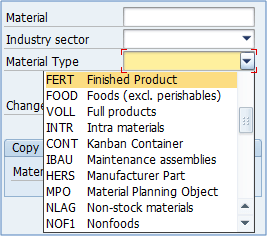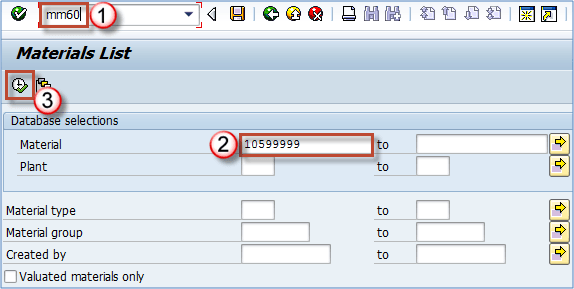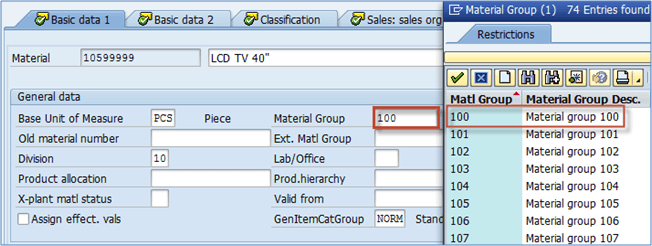Introduction to Master Data in SAP
What is Master Data?
Data stored in SAP R/3 is categorized as
- Master Data and
- Transactional Data.
Master data is the core data that is used as a base for any transaction.
If you are producing, transferring stock, selling, purchasing, doing physical inventory, whatever your activity may be, it requires certain master data to be maintained.
Example of Master Data
- Material master data
- Customer master data
- Vendor master data
- Pricing/conditions master data
- Warehouse management master data (storage bin master data)
The ones we will focus in MM module are material master and purchase info record.
Material Master: What you should know about material master?
Material in SAP is a logical representation of certain goods or service that is an object of production, sales, purchasing, inventory management etc. It can be a car, a car part, gasoline, transportation service or consulting service, for example.
In All the information for all materials on their potential use and characteristics in SAP are called material master. This is considered to be the most important master data in SAP (there are also customer master data, vendor master data, conditions/pricing master data etc), and all the processing of the materials are influenced by material master. That is why it’s crucial to have a precise and well maintained material master.
In order to be confident in your actions you need to understand material master views and its implications on processes in other modules, business transactions and a few more helpful information like tables that store material master data, transactions for mass material maintenance (for changing certain characteristics for a large number of materials at once).
Material types
In SAP ERP, every material has a characteristic called “material type” which is used throughout the system for various purposes.
Why is it essential to differentiate between material types and what does that characteristic represent?
- It can represent a type of origin and usage – like a finished product (produced goods ready for sale), semifinished product (used as a part of a finished product), trading goods (for resale), raw materials (used for production of semifinished and finished products) etc. These are some of the predefined SAP material types among others like food, beverages, service and many others.
- We can define our custom material types if any of standard ones doesn’t fulfill our need.

What can be configured on material type level (possible differences between types)?
- Material master views: It defines the views associated with a Material Type. For example, if we have a material type “FERT” assigned to our material Product 1000 – we don’t want to have Purchasing based views for that material because we don’t need to purchase our own product – it is configured on material type level.
- Default price control: we can set this control to standard or moving average price (covered later in detail), but this can be changed in material master to override the default settings.
- Default Item category group: used to determine item category in sales documents. It can be changed in material master to override the default settings.
- internal/external purchase orders, special material types indicators, and few more.

So material type is assigned to materials that have the same basic settings for material master views, price control, item category group and few other. Material Type can be assigned during the creation of the material in t-code MM01 (covered in detail later)
Where can we find a complete list of materials with their respective material type?
There are numerous transactions for this. The raw data itself is stored in MARA table
(you can view table contents with t-code SE16 or SE16N – newest version of the transaction), but in some systems these t-codes aren’t allowed for a standard user. In such cases, we can easily acquire the list with t-code MM60 (Material list). MM60 is used particularly often as it displays a lot of basic material characteristics.
Selection screen – you can enter only the material number:

We can see that material 10410446 in plant AR01 is of type FERT (finished product).

Using the toolbar button highlighted on screen, we can export the list of materials we have selected on screen.
Material group
Another characteristic SAP material is assigned during it’s creation is “material group”, which can represent a group or subgroup of materials based on certain criteria.
Which criteria can be used to create material groups?
Any criteria that suit your needs for reporting purposes is right for your system. You may group materials by the type of raw material used to produce it (different kinds of plastics used in the production process), or you can divide all services into consulting services (with different materials for SAP consulting, IT consulting, financial consulting etc), transportation services (internal transport, international transport), you can also group by production technique (materials created by welding, materials created by extrusion, materials created by injection etc). Grouping depends mainly on the approach your management chooses as appropriate, and it’s mainly done during the implementation, rarely changes in a productive environment.

In addition, there is a material hierarchy (used mostly in sales & distribution) that can also be used for grouping, but it’s defined almost always according to sales needs as it is used for defining sales conditions (standard discounts for customers, additional discounts, special offers).
On the other hand, material group is mainly used in PP and MM module.
If you need to display material groups for multiple materials, you can use already mentioned t-code MM60. You just need to select more materials in selection criteria.

Material group is easily subject to mass maintenance via transaction MM17. More on that in the material master editing section.
